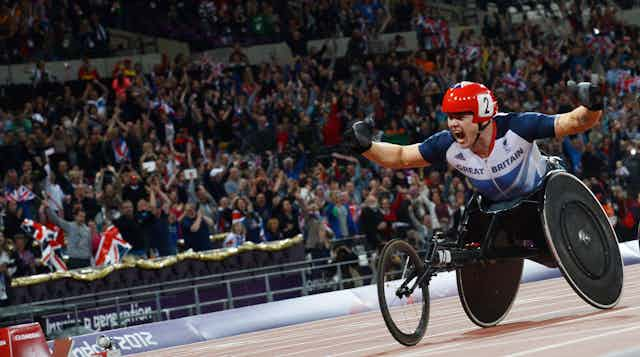Have you detected the not-so-subtle difference in the coverage afforded to our Paralympic and Olympic athletes? A sense that the marketing budgets are worlds apart for the two sporting events? It wouldn’t be hard, of course – the imbalance is glaringly (one might even say shamefully) patent.
To state the obvious, Paralympians represent our nation at the pinnacle of international competition. Yet despite this, most people cannot name many Paralympic competitors, as compared to our Olympians, who are overly exposed in the media. Even basic visual recognition of one of our Paralympic athletes would be beyond many of us.
Why is this? We could attribute it to a number of factors largely surrounding the marketing of the Games – of which the following are a few key examples:
1) the secondary timing of the Paralympics (after the Olympics, and therefore often perceived to be peripheral to the Olympics).
2) the lack of Paralympic advertisements in the general media.
3) the lack of newspaper coverage. There is no front page news afforded to our triumphant medal winners; no special Paralympic news wrapped around the paper; and no Paralympic results sections in our tabloids.
4) limited television coverage – although this might be slowly changing. This year the ABC is providing 120 hours of coverage, the most extensive of any Australian broadcasting company in Paralympic history.
The ABC’s Evening Show hosted by Stephanie Brantz, provides nightly entertainment, and the “lighter side” of the Paralympics is broadcast during the day.
While these lighter commentaries are intended to attract people to watch the Paralympics, they adversely impact on the credibility of the event over time, as well as the strength of the brand.
And while we may have a high regard for the ABC, the reality is that the major networks – Seven, Ten and Nine – drive the largest audience numbers and, in consequence, advertising and sponsorships for the athletes.
5) no repeated coverage during the day for the viewing public.
6) a limited amount of extra stories or equivalent coverage (to the Olympics) in the news on the major networks. The ABC’s Race to London, with coverage of Ahmed Kelly, Grace Bowman and Ryley Batt’s journey to the London Paralympics, appears like a one-off.
7) no widespread competitions by multinationals and sponsors encouraging engagement with the Paralympics.
8) no sponsored athletes telling us how great another product purchase would be.
These are only a few of many examples demonstrating the dearth of marketing spend for the Paralympics. Such realities do nothing to overturn the complacency, at best, in the public’s mind about the Games and the athletes who compete in them. Little, it seems, is being done to grow the brand.
But why?
A global affair
The Paralympics fares poorly when compared with coverage for the Olympics globally – even though the lines of engagement are shifting.
The International Paralympic Committee has expressed disappointment with US coverage. NBC, which holds the rights to the coverage, will not broadcast any of the Paralympics live and is only expected to broadcast four hour-long highlights segments in total.
This is in comparison to the 400 hours the network dedicated to its recent Olympics coverage, 150 hours of which were shown in prime-time.
There’s no immediate reason why this should be the case. In the UK, Channel 4 this week achieved its [best Sunday ratings](http://www.guardian.co.uk/media/2012/sep/03/paralympics-2012-pistorius-c4-ratings?utm_source=feedburner&utm_medium=feed&utm_campaign=Feed%3A+theguardian%2Fmedia%2Frss+(Media) figures for seven years, peaking at 4.5m viewers for Alan Oliveira’s controversial win over Oscar Pistorius in the men’s T44 200m final.
The station in now clearing its daytime schedule to air more coverage of the Games.
Could, and should, we go further? Yes, I would argue, we should. If we want to increase the attention afforded to these national heroes, we would one day move towards integrating the Paralympics with the Olympics, so that the Paralympics are not peripheral to the Olympics but an integrated part of them.
We would provide coverage for all elements of the Games, on major networks, to increase the level of public engagement.
We would profile all of our national heroes, celebrate each medal win, acknowledge each achievement, and experience the journey with each athlete.
This would enable us to proudly recognise our Paralympians, alongside our Olympians, rather then having different Games for each.
As a society, we can organise the most impressive global events, so surely it’s not beyond us to achieve this – nor to effect changes to perceptions and attitudes, and ultimately create a sense of acceptance.
Perhaps our next point of growth should be to provide equity in the marketing of sport to help this change along. Indeed this would be the ultimate “spirit of the Games”.

